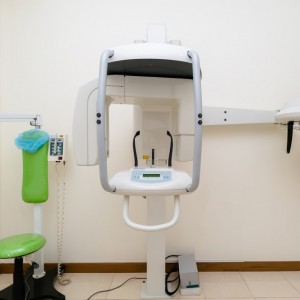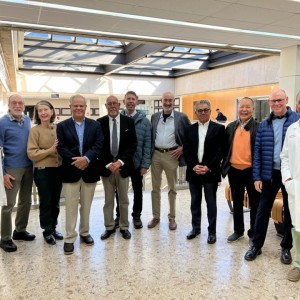
Mapping dental deserts in the U.S.: New HSDM research reveals widespread lack of access to care
Imagine having to travel for hours to receive routine oral health care, such as a dental cleaning, or waiting in agony for days to get treatment for a painful toothache. For nearly 1.7 million people in the United States, this is a harsh reality. A new study published in JAMA Network Open takes a fresh look at the issue of access to dental care, using a more nuanced approach to identify areas with limited access to dental services across the U.S.
Led by Dr. Hawazin Elani, assistant professor in Oral Health Policy and Epidemiology at Harvard School of Dental Medicine, the study is the first to map spatial accessibility to dental clinics nationally at a granular level. By analyzing data at the block group level— the smallest geographical unit used by the U.S. Census Bureau defined by clusters of blocks—the researchers provide a more detailed picture of dental care access, revealing significant disparities within specific geographic areas of the country.
“These areas are really ‘dental deserts’ where you’d have to go to great distances to find a dentist. Our findings highlight a concerning geographic maldistribution of dentists, with many rural and disadvantaged communities left without access to care,” Dr. Elani said.
The study's approach builds on existing efforts to understand dental care access, including the Health Resources and Services Administration's designation of Health Professional Shortage Areas for dental services, but takes it a step further by using an advanced gravity-based method to assess the availability of clinicians, accessibility, and adjustments for demand and supply factors at the block group level.
"We were able to identify areas with limited access to dental care that may have been missed by previous studies," said Md Shahinoor Rahman, coauthor of the study.
This disparity is evident in the ratio of dentists to population, with rural areas having one dentist available for every 3,850 people, compared to urban areas, which have over two and a half times more dentists, with one dentist for every 1,470 people.
By state, Alaska had the highest percentage of the population (10.4%) living in dental deserts, followed by Montana (7.8%) and North Dakota (7.7%). Only four states—Connecticut, Delaware, Indiana, and New Jersey—along with Washington, D.C., were identified as having no dental deserts.
Elani and her co-authors also examined socioeconomic data to contrast racial and ethnic composition, population by age group, poverty level, educational attainment, median household income, and health insurance. The results showed that nearly 24.7 million individuals lived in dental care shortage areas. In these counties, nearly 15.6% of the population lived below the federal poverty level. Racially, more White populations lived in rural areas with a shortage of dentists, as compared with Hispanic and Black populations. However, in urban areas where there is segregation and a concentration of poverty, Hispanic and Black individuals were more likely to live in areas with a shortage of dental care. A high proportion of individuals in rural shortage areas were also uninsured and more likely to experience spatial disparities in access to dental care.
Dr. Elani noted that this has serious implications for oral and overall health, saying, “The situation is likely even more dire for Medicaid and Medicare beneficiaries, who face additional barriers due to low dentist participation, worsening existing disparities. This can lead to people putting off much-needed care due to access challenges.”
"With this more precise data, we hope our findings can inform dental workforce planning efforts and targeted interventions at the federal and state levels to encourage dentists to practice in underserved areas and reduce disparities in access to dental care," Dr. Elani said.
This work was supported by the National Institute on Minority Health And Health Disparities of the National Institutes of Health under Award No. R01MD017093.
Source: https://www.hsdm.harvard.edu/
 Related articles
Related articles
Digital Dentistry 02 June 2025
A novel workflow for computer guided implant surgery matching digital dental casts and CBCT scan
Nowadays computer-guided “flap-less” surgery for implant placement using stereolithographic tem-plates is gaining popularity among clinicians and patients.
News 20 August 2025
Trust AI, the “ChatGPT” for dentists, has raised $6 million—the largest seed round ever for a dental technology startup. The emerging platform has attracted over 3,000 dentists in just weeks.
Products 26 February 2025
Millennium Dental Technologies Secures New U.S. Patent for Laser Periodontal Treatment
Millennium Dental Technologies, Inc. announced today that it has been awarded a new U.S. Patent (#12,011,326) for laser-assisted periodontal procedures associated with its LANAP protocol using the...
U.S. Oral Surgery Management (USOSM)—a management services company that exclusively serves premier oral and maxillofacial surgeons—has formed a new partnership with Rollar Oral Surgery, an oral...
U.S. Oral Surgery Management (USOSM), the first and largest physician practice management (PPM) company focused exclusively on the oral and maxillofacial surgery specialty, announced today that it...
 Read more
Read more
Digital Dentistry 19 November 2025
Increasing awareness of tooth fracture, both complete and incomplete, as a significant disease entity has led to improved diagnostic techniques.
Editorials 19 November 2025
As Ellen Simmons-Shamrell of the Class of 1977 wrote her annual check for the Michael D. Scotti, DMD Endowed Scholarship—established in memory of her late classmate—she reflected on how different...
Products 19 November 2025
Smartee Denti-Technology has unveiled the Smartee Digital Orthodontic Technology Exhibition Hall, a 1,200-square-meter space dedicated to showcasing the company’s innovations in clear aligner...
News 19 November 2025
Coupa, the global leader in AI-powered spend management, today announced a new collaboration with Specialized Dental Partners, a premier dental support organization (DSO) dedicated to enabling its...
News 19 November 2025
Breakthrough T1D has been selected as a 2025 Health Access Hero Award grant recipient by Sun Life U.S. and DentaQuest.















